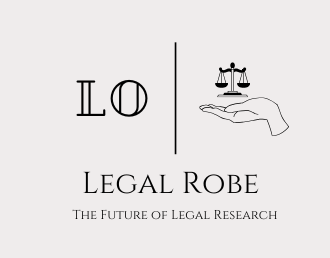M/s Vesuvius India Ltd VERSUS Commissioner of Customs- Customs
CUSTOMS, EXCISE AND SERVICE
TAX APPELLATE TRIBUNAL HYDERABAD
REGIONAL BENCH – COURT NO – I
Legal Robe 25025 of 2013
(Arising out of Order-in-Original No. 04/2012 dated 24.09.2012 passed by Commissioner of Customs & Central Excise (Appeals) Hyderabad)
M/s Vesuvius India Ltd
VERSUS
Commissioner of Customs
WITH
Legal Robe 25027 of 2013
(Arising out of Order-in-Original No. 04/2012 dated 24.09.2012 passed by Commissioner of Customs & Central Excise (Appeals) Hyderabad)
Arun Kumar Giri
VERSUS
Commissioner of Customs
AND
Legal Robe 25026 of 2013
(Arising out of Order-in-Original No. 04/2012 dated 24.09.2012 passed by Commissioner of Customs & Central Excise (Appeals) Hyderabad)
Shri Thumma Antony,
VERSUS
Commissioner of Customs
APPEARANCE
Shri S.P. Majumdar, Adv for the Appellant.
Shri A.V.L.N. Chary, Authorised Representative for the Respondent.
CORAM: HON’BLE Ms SULEKHA BEEVI C.S. MEMBER (JUDICIAL) HON’BLE MR. P. VENKATA SUBBA RAO, MEMBER (TECHNICAL)
FINAL ORDER No./ 30710-30712/2019
DATE OF HEARING: 21.06.2019 DATE OF DECISION: 21.06.2019
[ORDER PER: P. VENKATA SUBBA RAO)
All these appeals are filed against the same impugned order and hence are being disposed of together.
- Appeal No C/25025/2013 is filed by the importer assessee against the demand of differential duty invoking extended period of limitation, confiscation of imported goods, imposition of redemption fine as well as imposition of penalties under Sections 112 & 114AA.Appeal No. C/25026/2013 is filed by Shri Thumma Antony, Plant Manager of the importer firm against imposition of penalties upon him under Section 112 and 114AA. Appeal No C/25027/2013 is filed by Shri Arun Kumar Giri Manager (purchase) of the importer firm against imposition of fine under Section 112, 114AA upon him.
- Heardboth sides and perused the The learned counsel for the appellant submits that they have been importing aluminous cement and filed bills of entry along with all relevant documents. They claimed the classification of this product under Chapter Heading 2523.30 and have been doing so for a long time. From 2003-04, the tariff had undergone some change.
The Tariff Heading up to 2002-03 was as follows:-
25.23 Portland cement, aluminous cement, slag cement, supersulphate cement and similar hydraulic cements whether or not coloured or in the form of clinkers.
| 2523.10
2523.21 |
–Cement clinkers 30% Portland cement
– -White cement, whether not |
|
| artificially coloured | 30% | |
| 2523.29 | –Other | 30% |
| 2523.30 | –Aluminous cement | 30% |
| 2523.90 | –Other hydraulic cements | 30% |
From 2003-04, tariff heading has been modified as follows:
2523 Portland cement, aluminous cement, slag cement, supersulphate cement and similar hydraulic cements whether or not coloured or in the form of clinkers.
2523 10 00–Cement clinkers 25% Portland cement
2523 21 00–White cement, whether not
artificially coloured 30%
2523 29 –Other 30%
2523 29 20 –Ordinary Portland cement
| coloured | 30% | |
| 2523 29 30 | –Portland Pozzolana cement | 30% |
| 2523 29 40 | –Portland slag cement | 30% |
| 2523 29 90 | — other | 30% |
| 2523 30 00 | –Aluminous cement | 30% |
| 22523 90 | — Other hydraulic cements | |
| 2523 90 10 | — Sagol; ashmoh | 30% |
| 2523 90 20 | –High alumina refractory cement | 30% |
| 2523 90 90 | — other | 30% |
As may be seen from above, with effect from 2003-04, the heading “Other hydraulic cements” has been subdivided into three categories including “high alumina refractory cement”. He submits that it is the case of the department that aluminous cement which they have imported and declared as such deserves to be classified as high alumina refractory cement since the alumina content in it is high (more than 50%). The period of dispute is 2006-2011. According to the department, since the cement is classifiable as high alumina refractory cement, the benefit of notification No. 21/2002 Cus dated 01.03.2002 (Sl No 448) and successive notifications was not available to them and therefore, the differential duty is liable to be recovered. He submits that in the first case, there is nothing on record to show that what they have imported is not aluminous cement. When the Tariff was modified in 2003-04, instead of dividing the aluminous cement into various grades, a special category of high alumina refractory cement has been created. It is undisputed that the alumina content in their cement was over 50%. He would assert that such high aluminium content is essential for manufacture of refractory bricks which are their final products. Low aluminous cement will not be suitable for manufacture of refractory bricks. On a specific query from the Bench, he explained that in their documents, the brand name of the products which they had imported has been indicated and they have claimed classification of aluminous cement as they have been doing for a long time. While the trade name suggests it is high aluminous cement, it may or may not be evident from the name itself. However, whenever they submitted the documents to the Customs along with bills of entry, the certificate of quality sent by their suppliers was also enclosed which clearly indicated the percentage of alumina content. He presented before us copies of some such certificates of quality. For instance a certificate of quality dated 30.05.2007 for the product “alumina cement SECAR71” shows that the Alumina Al₂O₃ content of the products was 69.4%”. He would submit that in no case have they hidden the aluminium content of the cement or mis-declared it. However, they have claimed classification under chapter Heading 2523.30 while the department seeks to classify it under 2523 90 20. He would further assert that the Notification No. 21/2002 as well as its successor notifications provided for exemption for aluminous cement used in manufacture of refractory products falling under Chapters 38, 68, or 69. The benefit is available if the aluminous cement which is imported falls under Chapter 25 of the Customs Tariff Act 1985. He would submit that the successor notifications were also worded accordingly. Therefore, the benefit of exemption notification is available as long as (a) what they were using was aluminous cement; (b) it was used for manufacture of refractory products and (c)It fell under Chapter 25 of the Customs Tariff. It is not in dispute that they have been manufacturing refractory products. It is also not in dispute that what they are importing was aluminous cement/ high aluminous cement and it falls under Chapter 25. Since the notifications do not specify any particular sub-heading, regardless of where, in the Chapter, the aluminous cement imported by them falls and regardless of what the content of alumina is, they are entitled to the benefit of exemption notification. Therefore, the entire demand has been raised without any merit. Consequently, the penalties also do not sustain.
- Learned A.R. reiterates the impugned order and submits that the appellant has been importing high alumina refractory cement falling under Chapter Heading 2523.90 20 and have been mis-declaring it was aluminous cement classifying it under 2523.30 00 and wrongly availing the benefit of Notification No. 21/2002 (Sl No. 448A-Cus) dated 01.03.2002. Representative samples of the imported material were drawn by the Customs Authorities on receipt of specific information under a Panchnama from live consignments as well as from stocks available in factories and factory and godowns of the importer which established that the alumina content in the cement is very high and therefore it deserves to be classified as high alumina refractory cement. The investigating officers recorded the statements of various persons. After investigations, the department concluded that the importer has mis-declared the nature of the cement imported by them in order to wrongly avail the benefit of ineligible exemption notification. Accordingly, the live consignments were seized and show-cause notice was issued and after due process impugned order was passed confiscating the seized goods and imposing redemption fine as well as imposing penalties upon the importer and other two appellants in these cases. Differential duty was also demanded from the appellant on this ground. He asserts that but for the investigation conducted by the department, the fact that the importer had imported high alumina refractory cement and mis-declared it as alumina cement would not have come to light. Therefore the appeals do not have any merit and may be rejected.
- We have considered the arguments of both sides and perused the records.It is not in dispute that the importer appellant has manufactured refractory bricks and that they imported aluminous cement for the purpose. It is also not in dispute that they have been classifying these products as aluminous cement under Chapter 25. It is also not in dispute that they have not changed their classification to high alumna refractory cement after the Tariff has been revised with effect from 2003-04. It is also not in dispute that the goods were declared by the trade name and necessary documents were produced along with bills of entry by the appellant. The documents which were produced at the time of assessment and presented before us during the current proceedings show that the certificate of quality was among the documents presented. These certificates of quality clearly indicate the alumina content. In all cases the alumina content is over 50%. The only point of allegation that can sustain in the present case is that the assessee has wrongly classified the imported goods in their bills of The importer assessee is not an expert in classification of products and it is always possible that they claimed wrong classification. It is open for the department to direct the importer to correct classification or issue a show- cause notice proposing revision of classification. Merely claiming the wrong classification by itself does not amount to mis-declaration of the goods and there is nothing on record to show that the description of the goods in the Bill of entry and other documents as well as in the test report do not match. The department’s case has to fail on this ground alone for the extended period of limitation and correspondingly the penalties also need to be set aside.
- The next question to be examined is, if the imported products is high alumina refractory cement classifiable under 2523 90 20, whether the exemption notification No 21/02 is still available. A plain reading of the notifications shows that the exemption is available for any high alumina cement falling under chapter 25. It does not distinguish between high alumina cement and low alumina cement. If the intention of the notification was to confine it to aluminous cement falling under a specific heading of the Customs Tariff, it would have said so. From the documents produced before us, we have no doubt that what is imported was aluminous cement (with high alumina content). Therefore, there is no doubt in our mind that what was imported was aluminous cement for the purpose of manufacture of refractory bricks. Therefore, the exemption Notification No. 21/2002 is fully available to the appellant. Accordingly, the demand on this count even within the normal period of limitation does not sustain.
- As we have found that there was no mis-declaration at all and the appellant is entitled for the exemption notification in any case and there is nothing to be gained by the appellant by classifying their product under one heading or the other, we find the confiscation of the goods and imposition of penalties are also not sustainable and need to be set aside and we do so.
- Consequently the personal penalties imposed on Shri Arun Kumar Giri and Shri Thumma Antony also need to be set aside and we do so.
- In view of the above, all the three appeals are allowed and impugned orders are set aside with consequential relief if any.
(Operative portion of the order pronounced in open court on 21/06/2019)
(SULEKHA BEEVI C.S.) MEMBER (JUDICIAL)
(P. VENKATA SUBBA RAO) MEMBER (TECHNICAL)

